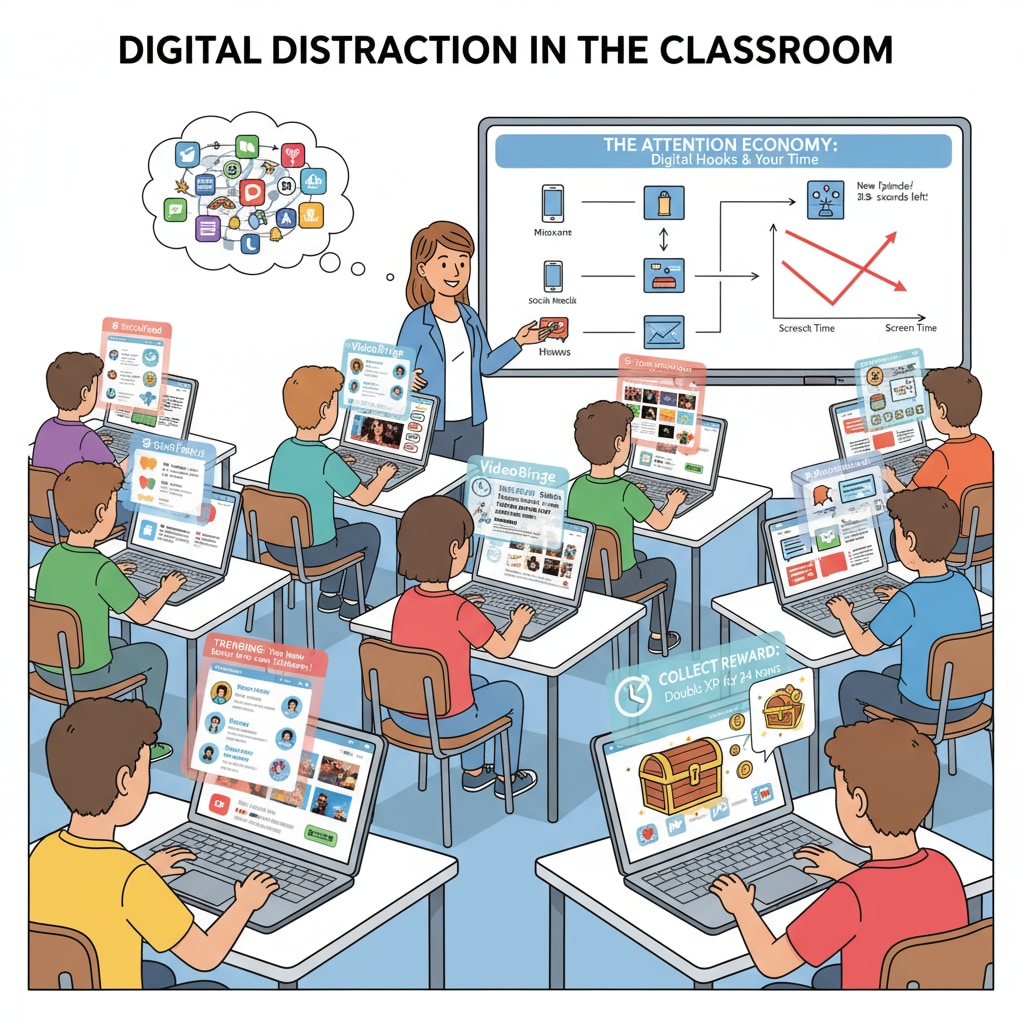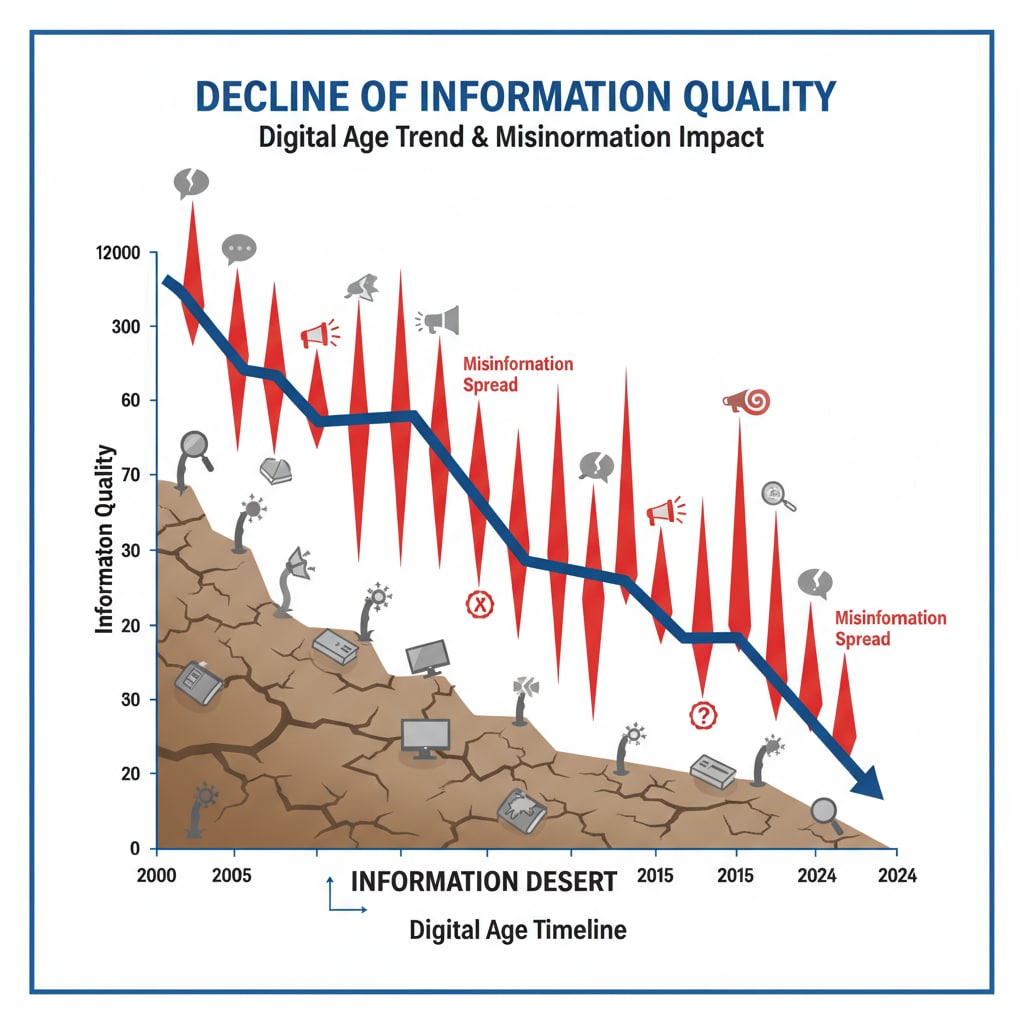In the contemporary digital landscape, the attention economy, information desert, and tech manipulation have become prevalent phenomena that significantly impact various aspects of our lives, especially the cognitive development of K12 students. The allure of the internet, with its carefully designed algorithms and interfaces, has turned into a double-edged sword. While it offers a wealth of information, it has also created a challenging environment for young minds to navigate.

The Allure of the Attention Economy
The attention economy is a system where tech companies strive to capture and monetize users’ attention. Through platforms like social media, video-sharing sites, and mobile apps, they use sophisticated algorithms to keep users engaged. For example, apps are designed to send notifications at strategic times, luring users back for more. As per Wikipedia’s entry on the attention economy, this model thrives on the idea that attention is a scarce resource, and companies are in a race to grab as much of it as possible. K12 students, being impressionable, are easy targets. They often get caught up in the endless stream of content, spending hours on devices without realizing the potential consequences.
The Creation of the Information Desert
Paradoxically, in the age of information overload, we are witnessing the emergence of an information desert. The algorithms that power these platforms are designed to show users what they want to see, based on their past behavior and preferences. This results in a filter bubble, where students are exposed to a narrow range of ideas and perspectives. As described on Britannica’s page on the filter bubble, this can limit their understanding of the world. Instead of exploring diverse and high-quality information, students are fed a constant diet of shallow and often misleading content. This not only reduces the quality of information they consume but also stifles their cognitive growth.

Tech manipulation also plays a significant role in this scenario. Tech companies use psychological tricks to keep students hooked. Features like infinite scrolling, autoplay, and gamification elements are all designed to make it difficult for students to disengage. These manipulative tactics are not only distracting but also prevent students from developing deep thinking skills. When students are constantly bombarded with stimuli, they have little time to reflect and process information.
So, what can be done to address these issues? Educators can play a crucial role by teaching digital literacy skills. By educating students on how to evaluate information sources, identify bias, and resist the allure of clickbait, they can empower them to make informed decisions. Parents, too, need to be more vigilant. Setting limits on screen time, monitoring the content their children consume, and engaging in meaningful offline activities can help counter the negative effects. Policy makers also have a responsibility to regulate the tech industry. Implementing stricter guidelines on data privacy, algorithm transparency, and content regulation can help create a safer digital environment for K12 students.
Readability guidance: In this article, we have explored how the attention economy, information desert, and tech manipulation are affecting K12 students. We’ve seen how these factors are interconnected and pose challenges to students’ cognitive development. By taking proactive steps, we can help students navigate the digital world more effectively and foster their intellectual growth.


